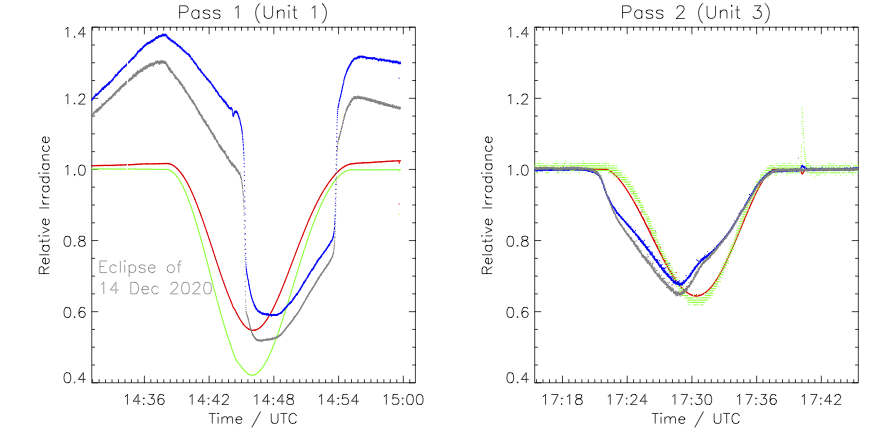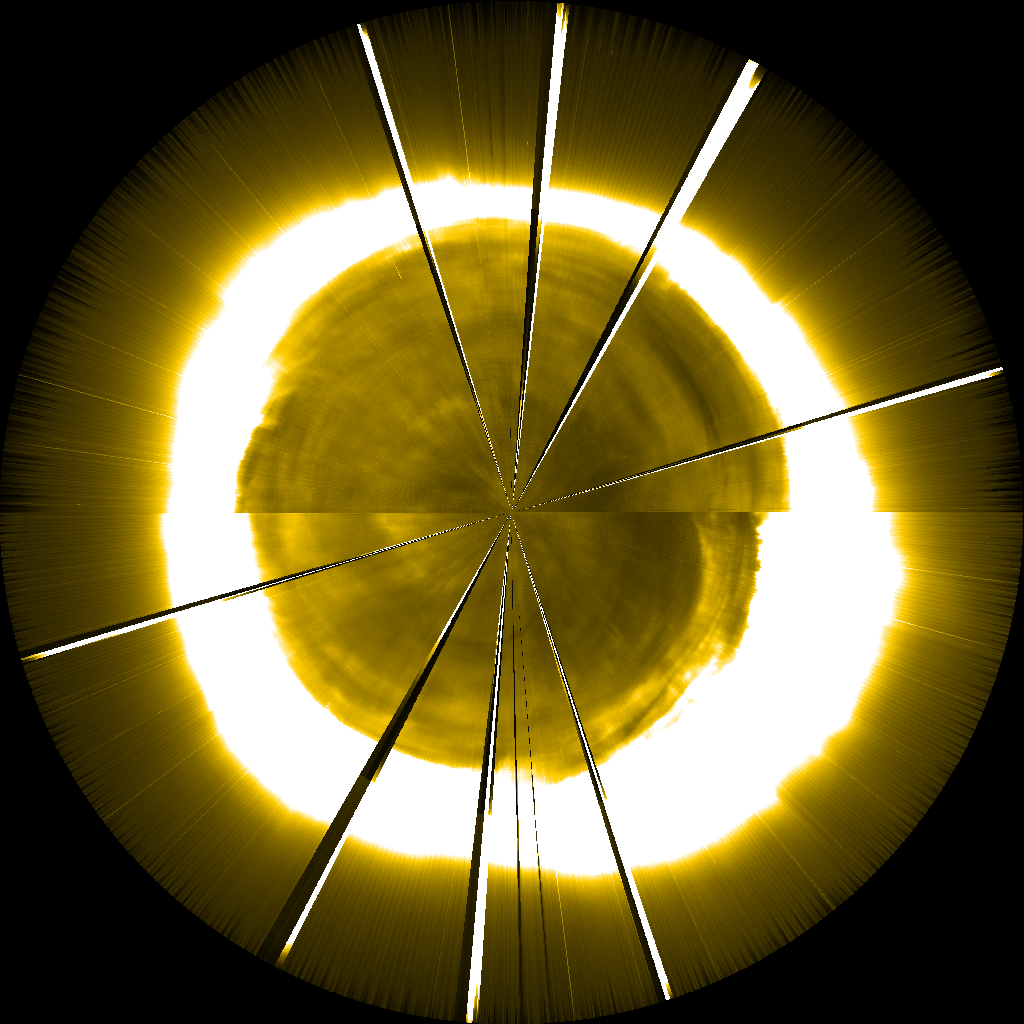Main menu
You are here
December 14, eclipse time!

A total solar eclipse occurs when the Moon fully covers the face of the Sun as seen from Earth. The complete coverage allows the solar corona to be observed from Earth, where at other times the light of the corona is completely drowned by that of the solar disk, making it impossible to observe the corona from the ground.
Due to the fact that the PROBA2 satellite quickly orbits the Earth, the SWAP imager onboard was able to observe several passages of the Moon in its field-of-view, some where the Moon’s disk was close to the solar one and some where there was a partial eclipse visible from PROBA2’s point-of-view (see simulation movie below). Therefore we observed with high cadence between 13:00UT and 19:15UT. Also the radiometer LYRA participated in this eclipse observation campaign, activating its backup unit as well as the nominal one.
LYRA Observations

For the occasion, LYRA activated its backup units (unit 1 for the first passage of the Moon in front of the Sun around 14:30 and unit 3 for the second passage around 17:30), which acquired in parallel with the nominal unit. The instrument monitored the progressive extinction of the solar light in its channels that observe in the ultraviolet and extreme ultraviolet. The peak observed around 14:36 in the black and blue curves (corresponding to the shorter-wavelength channels of LYRA) is caused by a C4 flare, produced in an active region of the solar surface that was finally hidden by the Moon around 14:45. LYRA observations are available in the event directory.
SWAP Observations
We made high cadence observations with SWAP and produced our typical sets of calibrated PNG images (with logos and timestamp, with timestamp only, and without logos or timestamp), as well as movies of the event. All the movies and images of the eclipse are collected in dedicated directories on our webpages. The event directory also contains a specially selected SWAP image to promote the eclipse. This is the image with the largest part of the Sun occulted by the Moon.
Data Use Policy
All PROBA2 images and movies used in outreach and the media should be credited to "ESA/ROB". Additional information about the terms of use for PROBA2 data is available on the PROBA2 website.
Contacting the PROBA2 Team
All requests for media comments, data assistance, or planning requests can be directed to the SWAP and LYRA teams via swap_lyra@oma.be.






